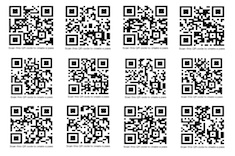The music begins to play, and readers return to the carpet to share the work they have been doing during reading workshop. The children have begun to settle into a circle when Ry comes to me with today’s read aloud nestled in his arms. He’s read it several times today during our workshop. I knew he’d love it.
“I wish I could take this book home tonight,” he says with a sparkle in his eye. Truthfully, who can resist the sparkle of a six-year-old?
It’s early in September. We haven’t started sending books home yet, and I’ve been secretly waiting for this moment. I look at him with great contemplation. “Hmm.” I pause. “Wouldn’t it be great to be able to take books from our classroom home?” I wonder aloud. “I never thought about that, Ry.” I am feeling a bit guilty about the master plan I have in my head, the small fib I am telling, and Ry’s innocent entry into the beginning stages of my scheme. “Let’s talk about it with your friends,” I add as the class finishes settling in for morning reading.
I look at the circle of students. Many have placed a book on the carpet in front of them to share in the conversation that is about to follow.
“Friends,” I begin, “Ry just had the best idea. I want to see what you think. Ry was reading the book we read together this morning and loves it so much, he’d like to take it home tonight to share with his family.” A quiet buzz begins to move around the circle. “Do you think it would be nice to be able to take home books from our classroom?”
Of course, the class is 100 percent behind the idea, and the buzz turns into a rumble as students clamor to get their voices above one another.
I fake a look of worry as I look into their eyes. “I don’t know,” I begin to think aloud. “Taking home a book from our classroom is a big responsibility. It has to stay safe so it doesn’t get damaged.” I pause for effect. The class gets even quieter as I shake my head like I am second-guessing the whole plan. “If Ry was going to take this book home, it would have to stay safe, but it would also need to come back tomorrow, because some of you probably want to read it.” I make the most skeptical face I can muster. (Yes, I’m feeling a bit guilty for the drama I’m adding to this conversation.)
The room grows quiet again. “Hmm. What if Ry were to test out taking books home for us tonight? What if Ry took the book home and brought it back tomorrow? I could give him something to put the book in so it stays safe. He could add it to his book bag, read it with his family, and then return with it tomorrow. If it works, maybe we could talk about everyone being able to take a book. What do you think, Ry?”
What I Believe (Now and Then)
This has sort of become my beginning-of-the-year routine. I spend our first weeks creating this need for books and then wait until someone falls so in love with a book that they want to take it home. It happens every year, but it wasn’t always like this. I’ve changed the way I send home books a lot since my first years of teaching. Here’s what I used to believe was most important about sending books home:
- I used to think students should take home only books I had selected.
- I used to believe students should take home only books they had read with me.
- I used to make sure students took home only books they could read independently.
- I used to send home only books that were from guided reading.
When I first began sending home books, I ran into all kinds of challenges. I wondered if books would make it back to our classroom. I sent home books only from small-group instruction, because I wanted to be sure kids could read what they were taking home. Sending home books with emergent and early readers does come with challenges. It wasn’t long before I realized I was creating some of them.
As I thought about it, I realized that sending home books as they were read in small group led to inconsistencies. Parents didn’t know when books were coming home, and honestly, kids were more likely to forget them or misplace them. As I began to think more critically about the way I had been sending home books, I knew I wanted kids to have the opportunity to take home a variety of books, and not just ones I had handed them. I decided I would shift to sending a book home each night, and began to figure out how to make it happen. We do a lot of little things that make a big difference for readers, and for me, sending a book home each evening needed to be priority one.
As I made changes, I let these beliefs guide my decisions:
- If I want students to read, they need to spend as much time as possible reading.
- Taking home books helps build a love of books.
- Taking home books helps students practice the skills and strategies we have been learning in our classroom.
- It’s important to send books home with students, because it helps families who may not have easy access to books.
- Sending home books helps introduce a variety of books to parents.
Myth Busting: Letting Children Select Books
When I took a deeper look at the beliefs that I wanted to drive this change, I had some myths to unravel. I used to think students should take home only books I had selected. The reality was that it was impossible to keep up with book selections for a class of 25 students, so of course what happened was that students couldn’t take home books regularly.
When they did take them home, the books often didn’t get read because it wasn’t part of the routine. It also meant that children weren’t getting books home as much as was necessary. Additionally I had concerns about children having difficulty reading a too-challenging book with their parents and learning word-solving habits that might be hard to correct. This might result in parents thinking their child was having reading difficulties even though they were making progress in instructional texts.
In an effort to fix these problems to match my beliefs, I stumbled upon the best solution: teaching children to select their own books. Teaching young readers to self-select is a conversation that grows across the school year. Children have a variety of reasons for wanting to take home books. Sometimes they hear a book read aloud and love it so much, they want to revisit it. Sometimes they stumble upon stories they enjoy or books so beautifully illustrated, they want to spend more time with them. Sometimes they find stories that remind them of something important, authors they love, or characters they want to spend more time reading about. As they gain independence and learn to find books they can read, they often want to take them home to share with their families. Like all readers, children grow in their decision making as they build a reading identity.
As students select books to take home each day during reading workshop, I ask them to write the title and tell who will read the book. With a simple “me,” “we,” or “you,” readers can help parents know if the book they selected is one they can read independently, one they might need a bit of help reading, or one they need to have read to them. Honestly, you can learn a lot about a child’s ability to self-select books in just these two simple steps. Older readers can note whether the books is easy, just right, or challenging. It is easy to adapt this language to classroom conversations.
Getting Books Back
Worrying about getting books back was a little easier hurdle to overcome. After all, a lost book really just means it might be in a better place. Each year, taking books home begins in much the way described in the vignette with Ry. I wait until that moment when one of the students really wishes they could take a book home with them. “What a great idea,” I always respond. “We should try it.” Then I usually ask the community to help create a plan for making it work. We send one book home the first night with a child willing to test our plan, to see how it goes. What will the family think? How was it to have one of our books at home to read? Did it make it back safely? Of course, it always works out perfectly, and then everyone wants to join in the fun.
I’ve sent books home with students as young as kindergarten. I’ve learned to trust this process with every book from my classroom as well as books I’ve checked out from our local public library. In truth, sending home a book each night already makes the return process more consistent. Although sending books home every night consistently leads to them being returned more consistently, I also add a special envelope to tuck books safely inside for travel between home and school. Although any envelope will do, I like Pendaflex folders, because they allow me to easily see the books children are selecting and provide room for us to write titles. I’ve seen teachers laminate large manila envelopes or use heavy-duty plastic baggies. Anything that provides a container for travel and maintains the importance of taking care of our books works fine.
Supporting Families
Parents often want their child to bring home a book more often, and allowing students to self-select books certainly helps with this. However, I have found it important to communicate to parents the different types of books readers might bring. Parents of emergent and early readers, especially, might think that every book their child brings home is one the child should be able to read. This can lead to unhappy parents and some poor reading strategies by children who are being asked to read something beyond their independent level. For this reason, I work to help parents understand that children will be bringing home three kinds of books: books they can read easily, books they can read with some occasional work, and books to be read to them.
You are probably wondering, What about the child who always takes home something too easy or something they want to have read to them each night? Yep, it happens every year. I just work through these situations as they arise. Sometimes I address them individually in a reading conference. Sometimes I spend time with the entire community taking a closer look at our choices and how they affect our growth in reading. Like every other bump we experience in our community, we just work through it.
Sending home books is essential for children who may not have access to books in their home. It not only allows children the opportunity to practice the skills and strategies they’ve been learning and develop a greater understanding of story, but also provides an opportunity to build their identity as readers. Making some small changes not only helped free up some time for me to do more important planning, but made a world of difference for readers.






